
St. Elizabeths Hospital - Wikipedia
St. Elizabeths Hospital was founded in August 1852 when the United States Congress appropriated $100,000 for the construction of a hospital in Washington, D.C., to provide care for indigent residents of the en.wikipedia.org/wiki/St._Eliza…
St. Elizabeths Hospital was founded in August 1852 when the United States Congress appropriated $100,000 for the construction of a hospital in Washington, D.C., to provide care for indigent residents of the en.wikipedia.org/wiki/St._Eliza…
District of Columbia and members of the U.S. Army and Navy with brain illnesses.
In the 1830s, local residents, including Dr. Thomas Miller, a medical doctor and president of the D.C. Board of Health, began petitioning Congress for a facility to care for people with brain
In the 1830s, local residents, including Dr. Thomas Miller, a medical doctor and president of the D.C. Board of Health, began petitioning Congress for a facility to care for people with brain
diseases in the City of Washington. Their efforts were given a significant boost by Dorothea Dix (1802–1887), a pioneering advocate for people living with mental illnesses who helped convince legislators of the need for the hospital. In 1852 she wrote the legislation that
established the hospital. Dix, who was on friendly terms with U.S. President Millard Fillmore, was asked to assist the Interior Secretary in getting the hospital started. Her recommendation resulted in the appointment of Dr. Charles H. Nichols as the hospital's first
superintendent.
Dix was instrumental in the founding of the first public mental hospital in Pennsylvania, the Harrisburg State Hospital. In 1853, she established its library and reading room.
The high point of her work in Washington was the Bill for the Benefit of the Indigent
Dix was instrumental in the founding of the first public mental hospital in Pennsylvania, the Harrisburg State Hospital. In 1853, she established its library and reading room.
The high point of her work in Washington was the Bill for the Benefit of the Indigent
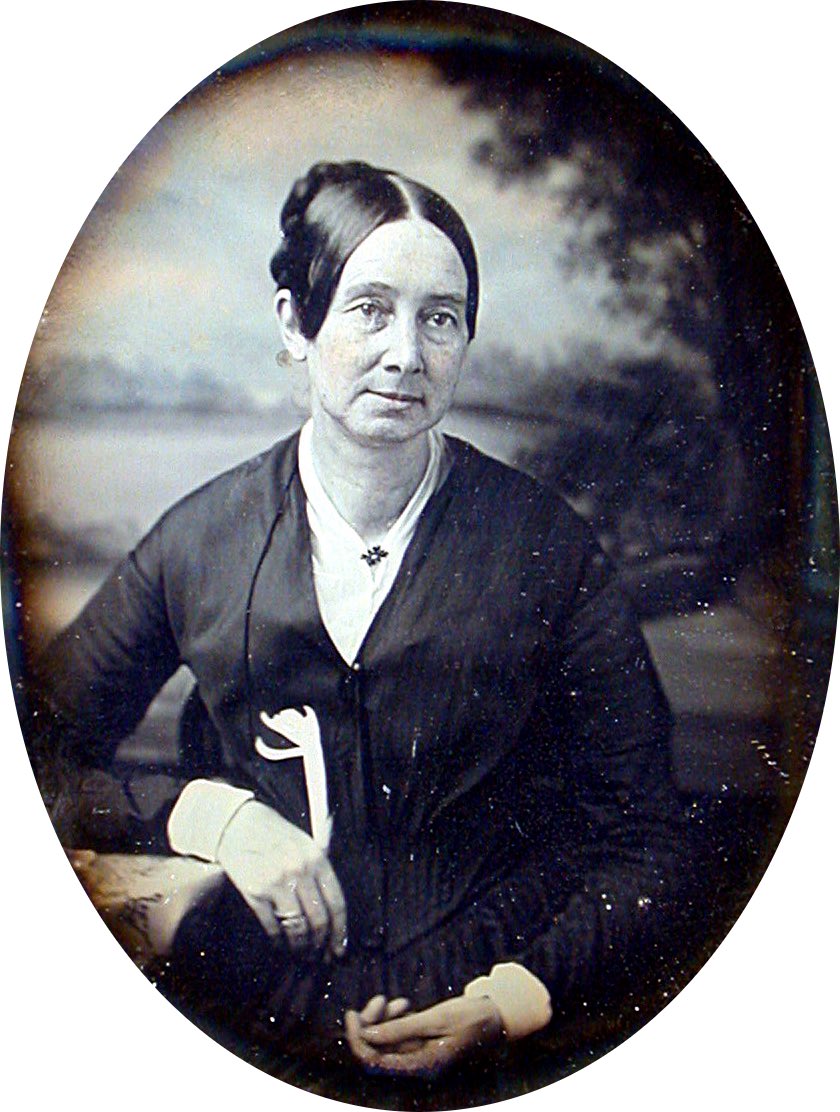
Insane, legislation to set aside 12,225,000 acres of Federal land 10,000,000 acres to be used for the benefit of the mentally ill and the remainder for the "blind, deaf, and dumb".
Extending her work throughout Europe, Dix continued on to Rome. Once again finding disrepair
Extending her work throughout Europe, Dix continued on to Rome. Once again finding disrepair
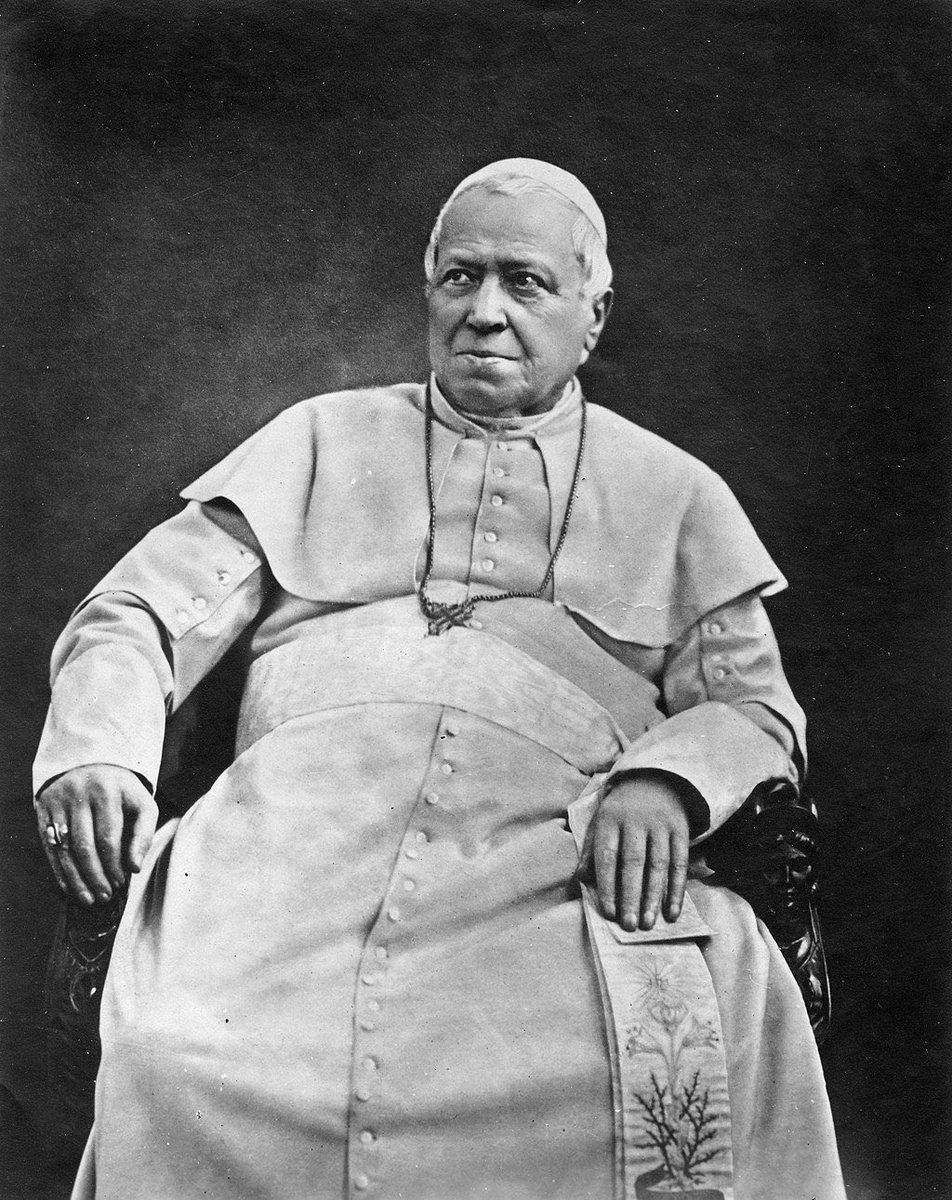
and maltreatment, Dix sought an audience with Pope Pius IX.
By 1940, St. Elizabeths Hospital was transferred to the Federal Security Agency (later the Department of Health, Education, and Welfare) as a U.S. Public Health Service Hospital.
In 1967, the hospital was transferred
By 1940, St. Elizabeths Hospital was transferred to the Federal Security Agency (later the Department of Health, Education, and Welfare) as a U.S. Public Health Service Hospital.
In 1967, the hospital was transferred
to the National Institute of Mental Health.
After three years of searching for an occupant, the Department of Homeland Security (DHS) announced on March 20, 2007, that it would spend approximately $4.1 billion to move its headquarters and most of its Washington-based offices to
After three years of searching for an occupant, the Department of Homeland Security (DHS) announced on March 20, 2007, that it would spend approximately $4.1 billion to move its headquarters and most of its Washington-based offices to
a new 4,500,000-square-foot facility on the site, beginning with the United States Coast Guard in 2010.
A ceremonial groundbreaking for the DHS consolidated headquarters took place at St. Elizabeths on September 11, 2009. The event was attended by Senator Joseph Lieberman,
A ceremonial groundbreaking for the DHS consolidated headquarters took place at St. Elizabeths on September 11, 2009. The event was attended by Senator Joseph Lieberman,
DHS Secretary Janet Napolitano, D.C. Delegate Eleanor Holmes Norton, DC Mayor Adrian Fenty, and acting GSA administrator Paul Prouty.
By April 2020, DHS National Operations Center relocated to Mount Weather due to the COVID-19 pandemic.
Several important therapeutic techniques
By April 2020, DHS National Operations Center relocated to Mount Weather due to the COVID-19 pandemic.
Several important therapeutic techniques
were pioneered at St. Elizabeths, and it served as a model for later institutions. Walter Freeman, onetime laboratory director, was inspired by St. Elizabeths to pioneer the transorbital lobotomy.
During American involvement in World War II, the Office of Strategic Services
During American involvement in World War II, the Office of Strategic Services
(OSS, predecessor to the CIA) used facilities and staff at St. Elizabeths hospital to test "truth serums". OSS unsuccessfully tested a mescaline and scopolamine cocktail as a truth drug on two volunteers at St. Elizabeths Hospital. Separate tests of THC as a truth serum were
equally unsuccessful.
The United States Office of Strategic Services (OSS) experimented with the use of mescaline, scopolamine, and marijuana as possible truth drugs during World War II. They concluded that the effects were not much different from those of alcohol: subjects
The United States Office of Strategic Services (OSS) experimented with the use of mescaline, scopolamine, and marijuana as possible truth drugs during World War II. They concluded that the effects were not much different from those of alcohol: subjects
became more talkative but that did not mean they were more truthful. Like hypnosis, there were also issues of suggestibility and interviewer influence. Cases involving scopolamine resulted in a mixture of testimonies both for and against those suspected, at times directly
contradicting each other.
LSD was also considered as a possible truth serum, but found unreliable. During the 1950s and 1960s, the United States Central Intelligence Agency (CIA) carried out a number of investigations including Project MKUltra and Project MKDELTA, which
LSD was also considered as a possible truth serum, but found unreliable. During the 1950s and 1960s, the United States Central Intelligence Agency (CIA) carried out a number of investigations including Project MKUltra and Project MKDELTA, which
involved illegal use of truth drugs including LSD.
In 1967, Perry Russo was administered sodium pentothal for interrogation by District Attorney Jim Garrison in the investigation of JFK's assassination.
Russo named two witnesses who could corroborate his story of attending a
In 1967, Perry Russo was administered sodium pentothal for interrogation by District Attorney Jim Garrison in the investigation of JFK's assassination.
Russo named two witnesses who could corroborate his story of attending a
party at Ferrie's apartment in September 1963 in which the assassination plot was made. The first, Russo's former girlfriend, appeared on an NBC News program about the Garrison investigation on June 19, 1967, and denied being at Ferrie's apartment, and said that she never even
met Ferrie until 1965. The second, a friend of Russo's, told NBC News that he was at Ferrie's apartment then but saw nobody resembling Oswald or Shaw.
Russo failed two polygraph examinations ordered by Garrison, on March 8 and June 19, and during the second he confessed to the
Russo failed two polygraph examinations ordered by Garrison, on March 8 and June 19, and during the second he confessed to the
polygraph operator that his story was not true.
Walter Sheridan, a former FBI agent and aide to Robert F. Kennedy who was investigating the Garrison accusations for NBC News.
Garrison had Russo testify two years later at the Clay Shaw trial, which ended in a not-guilty verdict
Walter Sheridan, a former FBI agent and aide to Robert F. Kennedy who was investigating the Garrison accusations for NBC News.
Garrison had Russo testify two years later at the Clay Shaw trial, which ended in a not-guilty verdict
after less than an hour of jury deliberation.
Walter James Sheridan (20 November 1925 - 13 January 1995) was an investigator for various agencies of the US government. He is best known for his role in the prosecution of Jimmy Hoffa, on which subject he published a book in 1972.
Walter James Sheridan (20 November 1925 - 13 January 1995) was an investigator for various agencies of the US government. He is best known for his role in the prosecution of Jimmy Hoffa, on which subject he published a book in 1972.
Sheridan was born in 1925 in Utica, New York. During World War II, he served in the US Navy's Submarine Service, and according to some sources worked for the Office of Naval Intelligence. After the war he benefited from the G.I. Bill, graduating from Fordham University in 1950.
Sheridan joined the Federal Bureau of Investigation, resigning after four years over J. Edgar Hoover's focus on anti-Communism. As Sheridan later put it, "Hoover was more interested in guys who were Communists for 15 minutes in 1931 than he was in guys who were stealing New
Jersey." He was then a National Security Agency investigator for three years.
Sheridan was an investigator for the United States Senate Select Committee on Improper Activities in Labor and Management, recruited to its staff by Robert F. Kennedy in 1957. He was a regional
Sheridan was an investigator for the United States Senate Select Committee on Improper Activities in Labor and Management, recruited to its staff by Robert F. Kennedy in 1957. He was a regional
coordinator for John F. Kennedy's 1960 presidential campaign, and a coordinator for the Robert F. Kennedy presidential campaign, 1968.
From 1965 to 1970, he was a NBC News special correspondent, producing documentaries on crime and gun control among other issues; his unit
From 1965 to 1970, he was a NBC News special correspondent, producing documentaries on crime and gun control among other issues; his unit
received a Peabody Award for work on the 1967 Detroit riot. Sheridan also covered the 1967 prosecution of Clay Shaw by Jim Garrison, and in 1967 produced an hour-long special for NBC on the assassination of John F. Kennedy.
The actual establishment of the NSA was done by a
The actual establishment of the NSA was done by a
November 4 memo by Robert A. Lovett, the Secretary of Defense, changing the name of the AFSA to the NSA, and making the new agency responsible for all communications intelligence.
Robert Abercrombie Lovett (September 14, 1895 – May 7, 1986) was the fourth United States Secretary
Robert Abercrombie Lovett (September 14, 1895 – May 7, 1986) was the fourth United States Secretary

of Defense, having been promoted to this position from Deputy Secretary of Defense. He served in the cabinet of President Harry S. Truman from 1951 to 1953 and in this capacity, directed the Korean War.
As Under Secretary of State, he handled most of the tasks of the State
As Under Secretary of State, he handled most of the tasks of the State
Department while George C. Marshall was Secretary.
Lovett was born on September 14, 1895 in Huntsville, Texas to Robert S. Lovett, president and chairman of the board of the Union Pacific Railroad and a Director of both The National City Bank of New York and Western Union.
On
Lovett was born on September 14, 1895 in Huntsville, Texas to Robert S. Lovett, president and chairman of the board of the Union Pacific Railroad and a Director of both The National City Bank of New York and Western Union.
On
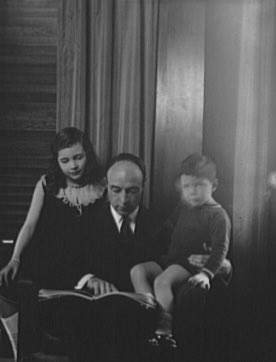
April 19, 1919, Lovett married debutante Adele Quartley Brown, daughter of James Brown (1863–1935), a descendant of Alexander Brown (1764—1834) and the New York Brown banking family that, in 1931, would merge with another Wall Street firm, Harriman Brothers & Company, forming
Brown Brothers Harriman & Co.,
Brown Brothers, an investment bank and trading company, was founded in 1818 in Philadelphia, Pennsylvania, by George Brown and John Brown, sons of former Ulster linen trader Alexander Brown (1764–1834) who had established a firm in Baltimore,
Brown Brothers, an investment bank and trading company, was founded in 1818 in Philadelphia, Pennsylvania, by George Brown and John Brown, sons of former Ulster linen trader Alexander Brown (1764–1834) who had established a firm in Baltimore,
Maryland. In 1825, the third son, James Brown (1791–1877), opened an affiliate in New York City under the name Brown Brothers and another in Boston, Massachusetts, in 1845.
These firms were later merged under the name. James Brown's son, John Crosby Brown (1838–1909), would be
These firms were later merged under the name. James Brown's son, John Crosby Brown (1838–1909), would be
a driving force for growth, making Wall Street in New York the center for operations and seeing the bank become major lenders to the textile, commodities, and transportation industries.
In 1931, the firm merged with Harriman Brothers & Company, another Wall Street firm owned by
In 1931, the firm merged with Harriman Brothers & Company, another Wall Street firm owned by
W. Averell Harriman and E. Roland Harriman, to form Brown Brothers Harriman & Co.
Brown joined his father in the family business, Alex. Brown & Sons, which became one of the leading investment banks of the U.S. in the nineteenth century. His father had started the business in
Brown joined his father in the family business, Alex. Brown & Sons, which became one of the leading investment banks of the U.S. in the nineteenth century. His father had started the business in
1800 importing Irish linen and exporting cotton and tobacco back to Britain and was also instrumental in the Second Bank of the United States. As his elder brother, a Liberal Member of Parliament, had founded of the banking-house of Brown, Shipley & Co., George succeeded his
father as head of Alex. Brown & Sons upon his death in 1834.
In 1800, Irish merchant Alexander Brown, founder of Alex Brown & Sons went into business in Baltimore, Maryland, importing Irish linen and exporting cotton and tobacco back to Britain. In 1810, his eldest son William
In 1800, Irish merchant Alexander Brown, founder of Alex Brown & Sons went into business in Baltimore, Maryland, importing Irish linen and exporting cotton and tobacco back to Britain. In 1810, his eldest son William
brought the family business to Liverpool under the name William Brown & Co.
In 1825, William formed a partnership with Joseph Shipley. The new trading firm financed merchants who were shipping goods between Britain, the United States and other parts of Europe and the Americas.
In 1825, William formed a partnership with Joseph Shipley. The new trading firm financed merchants who were shipping goods between Britain, the United States and other parts of Europe and the Americas.
After spending time in Europe, Montagu Collet Norman, 1st Baron Norman joined Martins Bank, where his father was a partner, in 1892, Brown, Shipley & Co., where his maternal grandfather was a partner, in 1894, and Brown Bros. & Co. of New York, in 1895. He became a partner in 
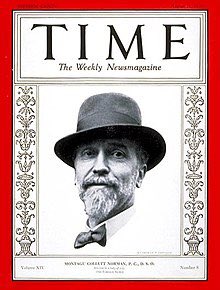
Brown Shipley in 1900 before leaving for South Africa, and retired from them in 1915.
Sir Basil Zaharoff,GCB, GBE (born Vasileios Zacharias; (October 6, 1849[4] – November 27, 1936) was a Greek arms dealer and industrialist. One of the richest men in the world during his
Sir Basil Zaharoff,GCB, GBE (born Vasileios Zacharias; (October 6, 1849[4] – November 27, 1936) was a Greek arms dealer and industrialist. One of the richest men in the world during his
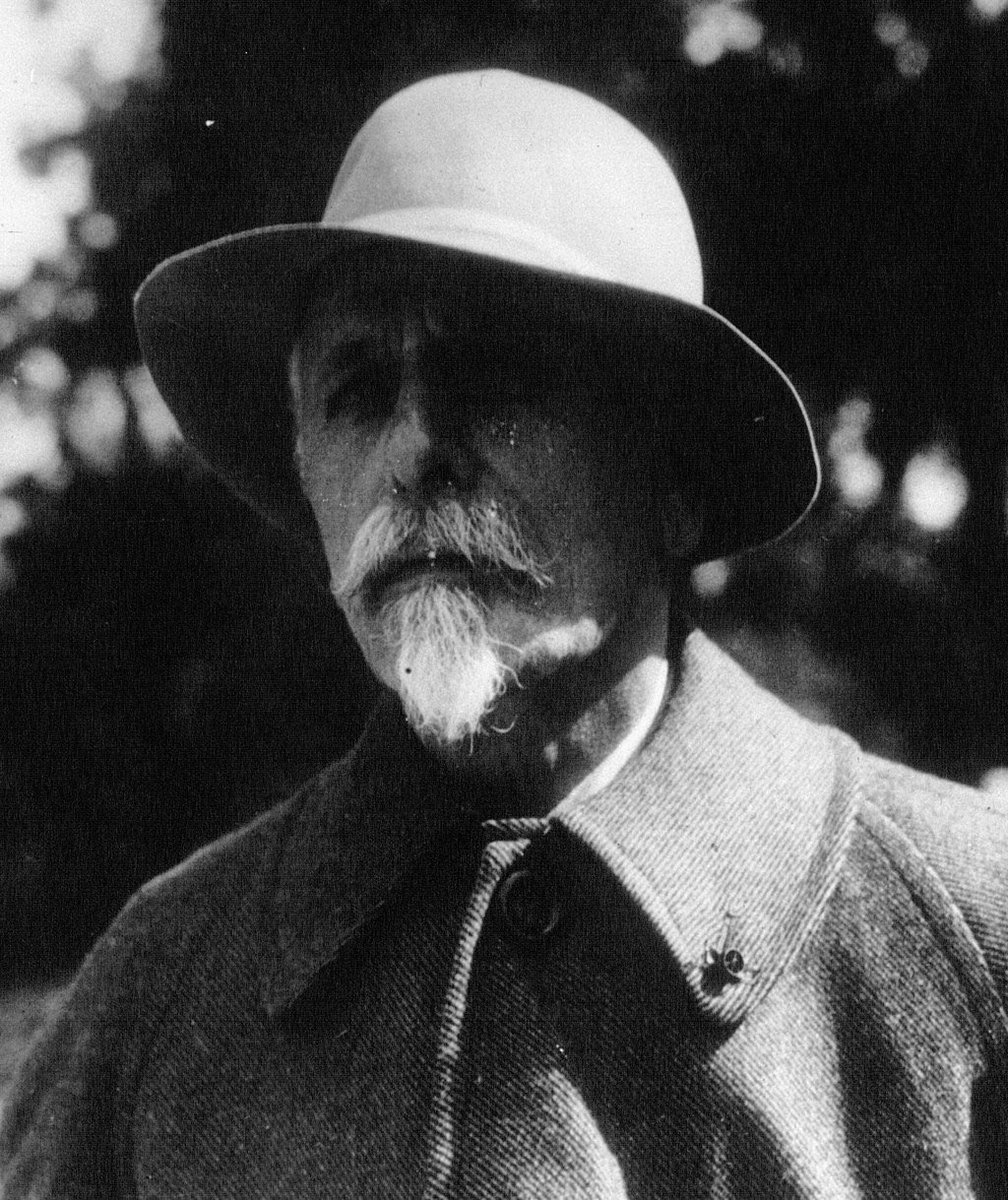
lifetime, Zaharoff was described as both a "merchant of death" and a "mystery man of Europe".
Zaharoff worked for Vickers, the munitions firm, from 1897 to 1927.
In 1902 Vickers took a half share in the famous Clyde shipyard John Brown and Company.
Zaharoff worked for Vickers, the munitions firm, from 1897 to 1927.
In 1902 Vickers took a half share in the famous Clyde shipyard John Brown and Company.
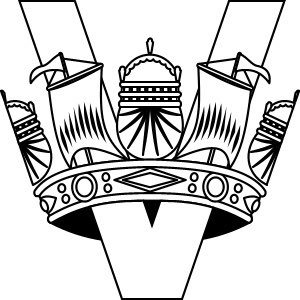
Vickers manufactured and sold the Maxim machine gun, forming a partnership with its inventor. They later took over the company and improved the design as the Vickers machine gun, which was the last major design Hiram Maxim himself worked on.
Sir Hiram Stevens Maxim (5 February
Sir Hiram Stevens Maxim (5 February

1840 – 24 November 1916) was an American-British inventor best known as the creator of the first automatic machine gun, the Maxim gun. Maxim held patents on numerous mechanical devices such as hair-curling irons, a mousetrap, and steam pumps. Maxim laid claim to inventing the
lightbulb.
Maxim was born in Sangerville, Maine on 5 February 1840.
The town was named after Colonel Calvin Sanger, a landowner.
Harry Oakes was born in Sangerville, Maine, one of five children of William Pitt Oakes and Edith Nancy Lewis.
Maxim was born in Sangerville, Maine on 5 February 1840.
The town was named after Colonel Calvin Sanger, a landowner.
Harry Oakes was born in Sangerville, Maine, one of five children of William Pitt Oakes and Edith Nancy Lewis.
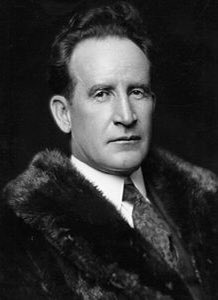
Oakes was murdered sometime after midnight on July 8, 1943. He was struck four times behind the left ear with a miner's hand pick, to disguise the wounds from a silver ice pick (Simpsons of the Strand), and was then burned all over his body using insecticide, with the flames
being concentrated around the eyes. His body was then sprinkled with feathers from a mattress. When Oakes was discovered, the feathers were still being gently blown over his body by the bedroom fan.
The Bahamas’ governor, the Duke of Windsor (formerly King Edward VIII of the
The Bahamas’ governor, the Duke of Windsor (formerly King Edward VIII of the
United Kingdom), who had become a close friend of Oakes during the previous three years, took charge of the investigation from the outset.
Correspondence between the Duke and Kenneth de Courcy, dated between 1946 and 1949, emerged in a U.S. library in 2009. The letters suggest
Correspondence between the Duke and Kenneth de Courcy, dated between 1946 and 1949, emerged in a U.S. library in 2009. The letters suggest
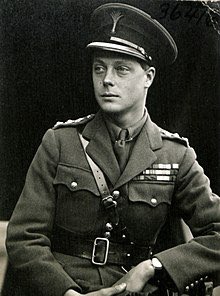
a scheme where the Duke would return to England and place himself in a position for a possible regency. The health of George VI was failing and de Courcy was concerned about the influence of the Mountbatten family over the young Princess Elizabeth.
Wallis, Duchess of Windsor
Wallis, Duchess of Windsor
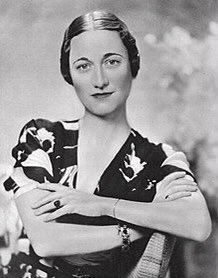
(born Bessie Wallis Warfield; June 19, 1896 – April 24, 1986), known as Wallis Simpson, was an American socialite and wife of the Duke of Windsor, the former King-Emperor Edward VIII. Their intention to marry and her status as a divorcée caused a constitutional crisis that
led to Edward's abdication.
For her first few years, she and her mother were dependent upon the charity of her father's wealthy bachelor brother Solomon Davies Warfield, postmaster of Baltimore and later president of the Continental Trust Company and the Seaboard Air Line
For her first few years, she and her mother were dependent upon the charity of her father's wealthy bachelor brother Solomon Davies Warfield, postmaster of Baltimore and later president of the Continental Trust Company and the Seaboard Air Line
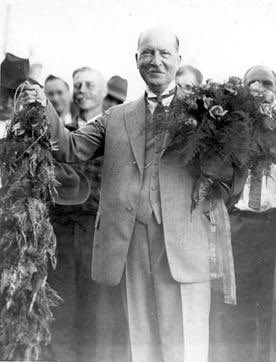
Railway.
A few months after Warfield's death, the SS President Warfield was built in 1928 by Pusey and Jones Corporation, in Wilmington, Delaware, for the century-old Baltimore Steam Packet Company, also known as the "Old Bay Line," operating steamships on Chesapeake Bay between
A few months after Warfield's death, the SS President Warfield was built in 1928 by Pusey and Jones Corporation, in Wilmington, Delaware, for the century-old Baltimore Steam Packet Company, also known as the "Old Bay Line," operating steamships on Chesapeake Bay between

Baltimore and Norfolk, Virginia, their Chesapeake Bay. The Old Bay Line was controlled by the Seaboard Air Line Railway; Warfield was president of both companies in the 1920s.
During World War II, the President Warfield was acquired by the U. S. government and transferred to
During World War II, the President Warfield was acquired by the U. S. government and transferred to
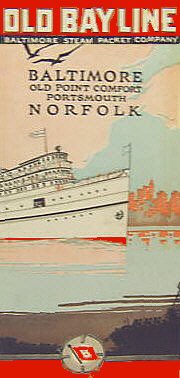
Great Britain in 1942 under the Lend-Lease program to serve as a troop transport.
Purchased secretly in 1946 by the Jewish nationalist organization Haganah and renamed Exodus 1947, the ship was briefly in the world spotlight as one of several vessels illegally attempting to
Purchased secretly in 1946 by the Jewish nationalist organization Haganah and renamed Exodus 1947, the ship was briefly in the world spotlight as one of several vessels illegally attempting to
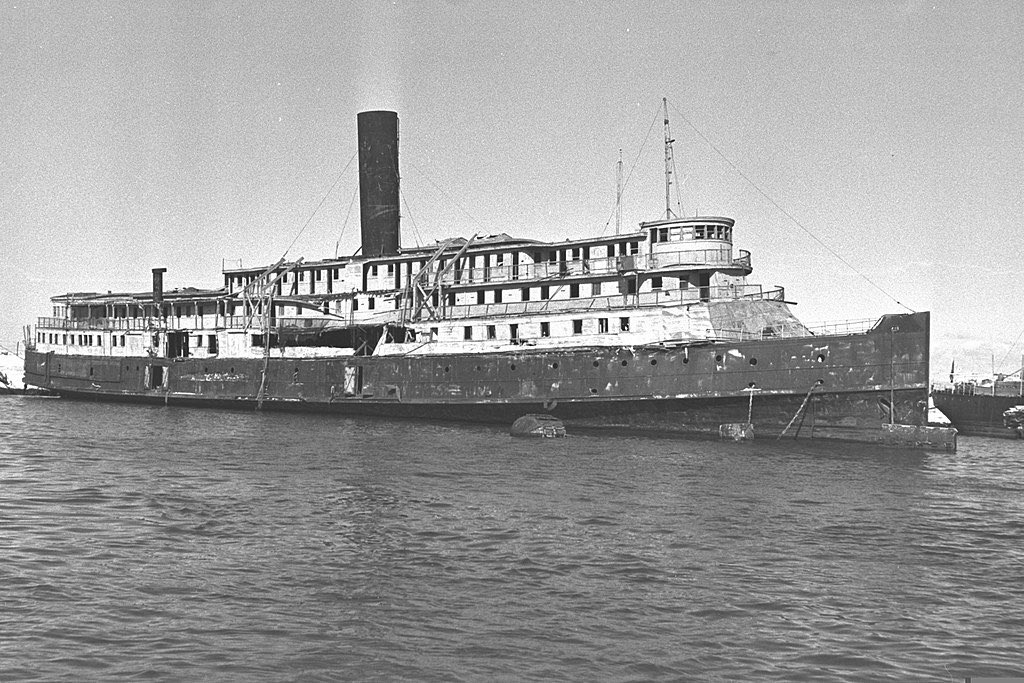
carry Jewish refugees to British-controlled Palestine. This unsuccessful incident was later the subject of the 1958 novel Exodus by Baltimorean Leon Uris, (1924-2003) and the motion picture based upon it, released in 1960.
Of the 64 vessels that sailed in Aliyah Bet, Exodus
Of the 64 vessels that sailed in Aliyah Bet, Exodus
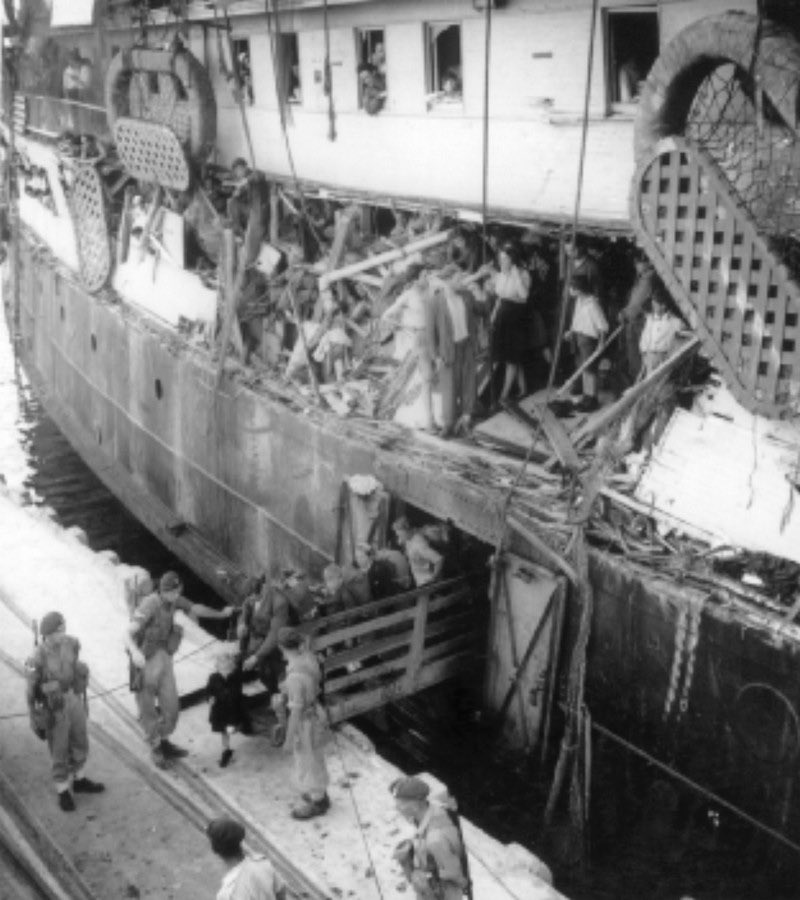
1947 was the largest. She carried 4,515 passengers, the largest-ever number of illegal immigrants to Palestine.
On November 9, 1946 the Potomac Shipwrecking Company of Washington, D.C. bought President Warfield from the WSA for $8,028. The company was acting for the Haganah
On November 9, 1946 the Potomac Shipwrecking Company of Washington, D.C. bought President Warfield from the WSA for $8,028. The company was acting for the Haganah
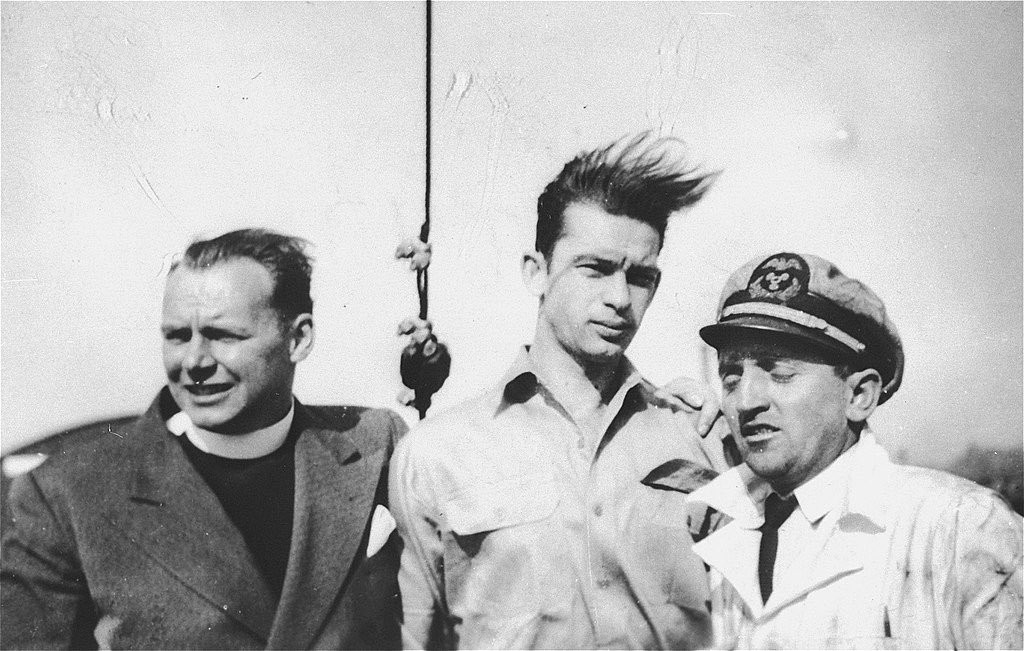
Jewish paramilitary organization, and two days later sold her for $40,000 to the Weston Trading Company of New York, which was a Haganah front organization. Zionist supporters in Baltimore funded her purchase. Haganah transferred her to Mossad LeAliyah Bet, the branch of Haganah
that ran Aliyah Bet.
As soon as President Warfield had left port, Mossad LeAliyah Bet renamed her Exodus 1947 (and, in Hebrew, Yetz'iat (sic) Tasbaz, or Yetzi'at Eiropa Tashaz, "Flight from Europe 5707") after the biblical Jewish Exodus from Egypt to Canaan. The name was
As soon as President Warfield had left port, Mossad LeAliyah Bet renamed her Exodus 1947 (and, in Hebrew, Yetz'iat (sic) Tasbaz, or Yetzi'at Eiropa Tashaz, "Flight from Europe 5707") after the biblical Jewish Exodus from Egypt to Canaan. The name was
proposed by Israeli politician and military figure Moshe Sneh, who at the time was in charge of illegal migration for the Jewish Agency. The name was later described by Israel's second Prime Minister Moshe Sharett (then Shertok) as "a stroke of genius, a name which by itself,
says more than anything which has ever been written about it."
The Jewish Agency for Israel (Hebrew: הסוכנות היהודית לארץ ישראל, romanized: HaSochnut HaYehudit L'Eretz Yisra'el) is the largest Jewish non-profit organization in the world. It was established in 1929 as the
The Jewish Agency for Israel (Hebrew: הסוכנות היהודית לארץ ישראל, romanized: HaSochnut HaYehudit L'Eretz Yisra'el) is the largest Jewish non-profit organization in the world. It was established in 1929 as the

operative branch of the World Zionist Organization (WZO).
The Jewish Agency played a central role in the founding and the development of the State of Israel. David Ben-Gurion served as its Chairman of the Executive Committee from 1935, and in this capacity on 14 May 1948, he
The Jewish Agency played a central role in the founding and the development of the State of Israel. David Ben-Gurion served as its Chairman of the Executive Committee from 1935, and in this capacity on 14 May 1948, he

proclaimed Israel's independence, following which he served as the first Israeli prime minister.
Following the promulgation of the pro-Zionist Balfour Declaration of 1917, Dr. Chaim Weizmann, president of the British Zionist Federation formed the Zionist Commission in March
Following the promulgation of the pro-Zionist Balfour Declaration of 1917, Dr. Chaim Weizmann, president of the British Zionist Federation formed the Zionist Commission in March

1918 to go to Palestine and make recommendations to the British government.
During the Stalinist "Great Purge", he was arrested for alleged espionage and Zionist activity, and executed in 1939. His fate became known to his wife and children only in 1955. Maria Weizmann was a
During the Stalinist "Great Purge", he was arrested for alleged espionage and Zionist activity, and executed in 1939. His fate became known to his wife and children only in 1955. Maria Weizmann was a
doctor who was arrested as part of Stalin's fabricated "Doctors' plot" in 1952 and was sentenced to five years' imprisonment in Siberia.
He joined Clayton Aniline Company in 1905 where the director Charles Dreyfus introduced him to Arthur Balfour, then Prime Minister. Weizmann
He joined Clayton Aniline Company in 1905 where the director Charles Dreyfus introduced him to Arthur Balfour, then Prime Minister. Weizmann
would later achieve fame through his work on bacterial fermentation and go on to become the first president of Israel.
He used the bacterium Clostridium acetobutylicum (the Weizmann organism) to produce acetone. Acetone was used in the manufacture of cordite explosive
He used the bacterium Clostridium acetobutylicum (the Weizmann organism) to produce acetone. Acetone was used in the manufacture of cordite explosive
propellants critical to the Allied war effort (see Royal Navy Cordite Factory, Holton Heath). Weizmann transferred the rights to the manufacture of acetone to the Commercial Solvents Corporation in exchange for royalties.
The Commercial Solvents Corporation was established at
The Commercial Solvents Corporation was established at
the end of World War I; earning distinction as the pioneer producer of acetone and butanol by fermentation processes developed and patented by Dr. Chaim Weizmann. Terre Haute, Indiana was chosen to be the site of CSC's research.
William C. Patrick III (July 24, 1926 – October 1,
William C. Patrick III (July 24, 1926 – October 1,
2010) was an influential microbiologist and bioweaponeer for the U.S. Army during the Cold War.
Patrick headed the American offensive biological warfare (BW) program at Fort Detrick, MD beginning in 1951.
Patrick began his professional career at the research division of
Patrick headed the American offensive biological warfare (BW) program at Fort Detrick, MD beginning in 1951.
Patrick began his professional career at the research division of
Commercial Solvents in Terre Haute, Indiana.
From 1951 to 1966, Patrick was employed in a variety of offensive programs which included 1) Project engineer in the design and start-up operations in the virus production facility as well as the freeze drying plant at Pine Bluff
From 1951 to 1966, Patrick was employed in a variety of offensive programs which included 1) Project engineer in the design and start-up operations in the virus production facility as well as the freeze drying plant at Pine Bluff
Arsenal (PBA), Arkansas; 2) Plant manager of the virus pilot plant at Fort Detrick, Maryland; 3) Special envoy to Dugway Proving Ground (DPG), Utah, during the field testing of several munitions systems; and 4) Chief of Agent Processing Branch, Pilot Plant Division, Biological
Warfare Laboratories (BWL) for several years.
Patrick joined the new U.S. Army Medical Research Institute of Infectious Diseases (USAMRIID) in 1972 and served as its Plans and Programs Officer until 1984, reporting directly to the commander. He participated in the planning,
Patrick joined the new U.S. Army Medical Research Institute of Infectious Diseases (USAMRIID) in 1972 and served as its Plans and Programs Officer until 1984, reporting directly to the commander. He participated in the planning,
directing, coordinating, evaluating and reporting on a broad, complex program of medical defense against bio-agents.
After leaving his government job, Patrick was a consultant to the U. S. Government and private organizations. He performed services on a contractual basis to
After leaving his government job, Patrick was a consultant to the U. S. Government and private organizations. He performed services on a contractual basis to
Defense Intelligence Agency, Armed Forces Medical Intelligence Center, Central Intelligence Agency, USAMRIID, Federal Bureau of Investigation, United States Secret Service, and many other institutions through his own firm, Biothreats Assessment.
Patrick's BW experience provided
Patrick's BW experience provided
significant insights into Iraq's BW program. On the UNSCOM 78 trip to Iraq (1994), his observations on how process equipment was being used at the Al Hakum facility provided the nearest thing to a "smoking gun" for Iraqi intent until they themselves declared an extensive BW
program in 1995.
On 2 November 1949, the anniversary of the Balfour Declaration, the Daniel Sieff Institute, much enlarged and rebuilt, was renamed the Weizmann Institute of Science.
Israel Moses “Daniel” Sieff, Baron Sieff (4 May 1889 – 14 February 1972) was an English
On 2 November 1949, the anniversary of the Balfour Declaration, the Daniel Sieff Institute, much enlarged and rebuilt, was renamed the Weizmann Institute of Science.
Israel Moses “Daniel” Sieff, Baron Sieff (4 May 1889 – 14 February 1972) was an English
businessman and Zionist who was chairman of the British retailer Marks & Spencer from 1964 to 1967.
Weizmann had offered the post of director to Nobel Prize laureate Fritz Haber, but took over the directorship himself after Haber's death en route to Palestine.
Haber is also
Weizmann had offered the post of director to Nobel Prize laureate Fritz Haber, but took over the directorship himself after Haber's death en route to Palestine.
Haber is also
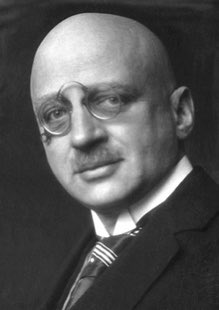
considered the "father of chemical warfare" for his years of pioneering work developing and weaponizing chlorine and other poisonous gases during World War I, especially his actions during the Second Battle of Ypres.
In 1933, during Haber's brief sojourn in England,
In 1933, during Haber's brief sojourn in England,
Chaim Weizmann offered him the directorship at the Sieff Research Institute (now the Weizmann Institute) in Rehovot, in Mandatory Palestine. He accepted, and left for the Middle East in January 1934, travelling with his half-sister, Else Haber Freyhahn. His ill health overpowered
him and on 29 January 1934, at the age of 65, he died of heart failure, mid-journey, in a Basel hotel.
• • •
Missing some Tweet in this thread? You can try to
force a refresh



